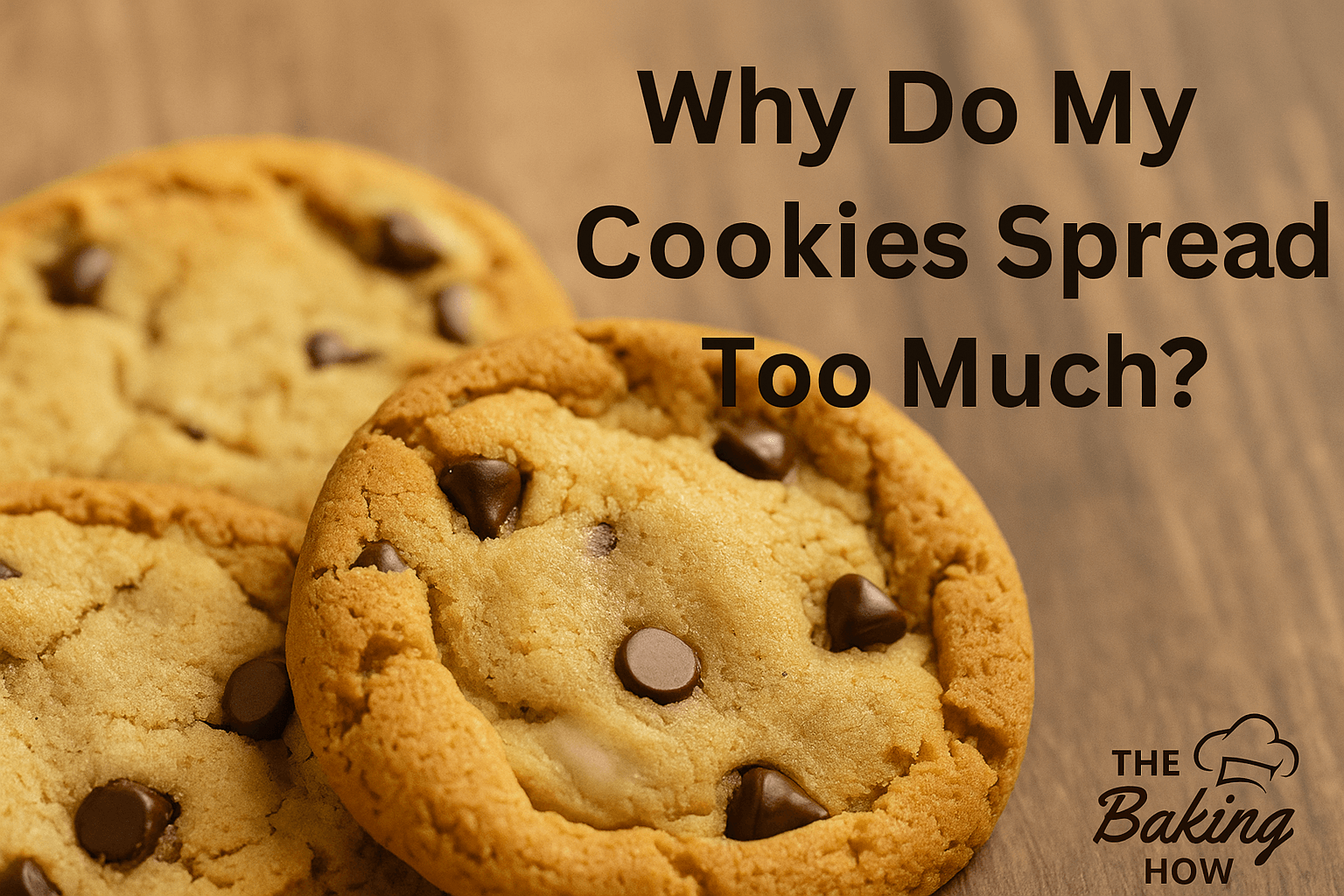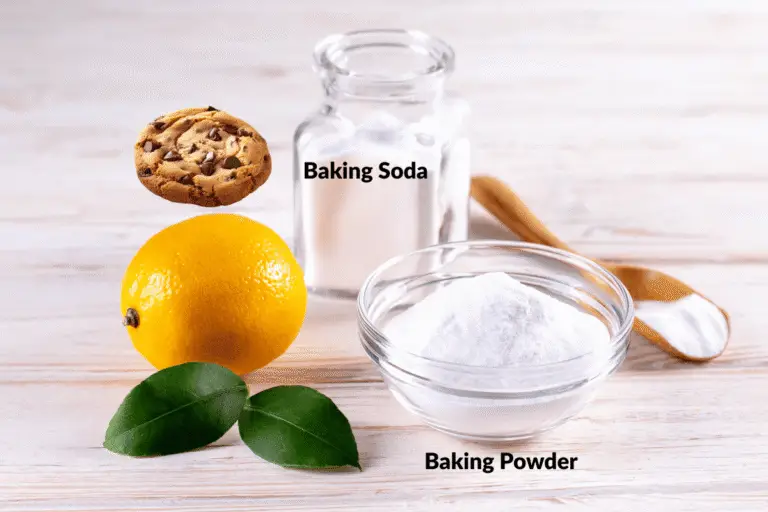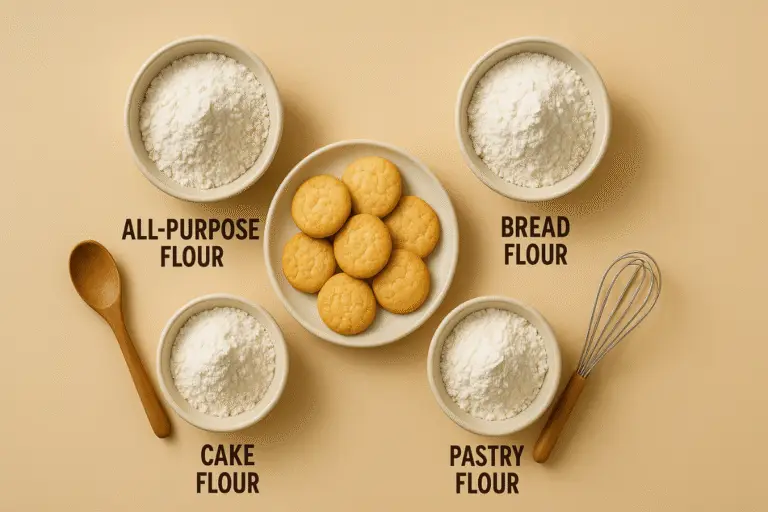Why Do My Cookies Spread Too Much? (5 Expert Fixes)

Are you a beginner cookie baker wondering, “Why do my cookies spread too much?” Don’t worry — you’re not alone. Almost every baker faces this challenge at some point, especially in the early days of baking.
As someone who has spent over 17 years in the cookie and biscuit industry, I’ve seen and fixed countless batches of cookies that spread too far and turned into thin, flat discs. In large-scale production, even a slight imbalance in ingredients or baking temperature can ruin thousands of cookies — and trust me, I’ve been there!
Cookies often spread too much because of issues like excess sugar, too much butter or fat, high liquid content, incorrect leavening agents, overmixing the dough, or baking at the wrong temperature.
In this guide, I’ll break down the common causes of cookie spreading and share my proven fixes so you can bake cookies that hold their shape perfectly every time
Common Reasons Your Cookies Spread Too Much
Baking isn’t just fun , it’s also a science. Each ingredient and step in your cookie making process plays a critical role in determining the final shape, texture, and taste of your cookies.
One of the most common challenges beginner bakers face is cookies spreading too much in the oven. This usually happens because of two main factors:
- Ingredient ratios – When the balance of sugar, butter, and liquids isn’t right, it can drastically affect the cookie’s structure.
- Mixing and baking process – How you handle the dough and the baking temperature also influences whether cookies hold their shape or flatten out.
Let’s dive into these causes in detail and see how to avoid them.
Too Much Sugar
In cookie recipes, sugar does much more than add sweetness. It plays a critical role in:
- Texture development (chewy vs. crisp cookies)
- Color formation (through caramelization)
- Structure setting
But if you use too much sugar, it melts quickly during baking and causes the dough to spread excessively. This results in thin, flat cookies that lack structure.
Industry Tip (from my 17 years in baking): In large-scale production, we use milled sugar for even mixing and to keep the quantity lower. This helps achieve cookies with perfect shape and structure.
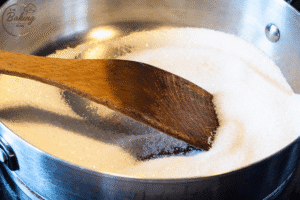
Too Much Butter or Fat
After sugar, butter (or other fats) is the next big factor that impacts cookie structure. Butter gives cookies their smooth texture and rich flavor as it melts in the oven.
But here’s the catch:
If there’s too much butter in your recipe, it melts too quickly and makes the dough overly soft. As a result, the cookies spread too much and lose their intended shape.
The temperature and type of butter used is often the number one reason for cookies spreading. To truly master this, it’s important to understand what butter does in cookies on a scientific level.
Industry Tip: In professional baking, we carefully balance fat content to prevent excessive spreading, especially when baking at higher temperatures.
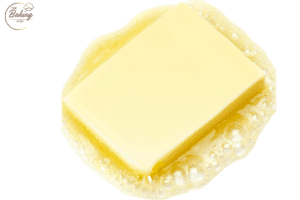
Too Much Liquid Ingredients
Another common reason cookies spread too much is the use of excessive liquid ingredients like milk, eggs, or even water. Too much liquid softens the dough, weakening its structure. When baked, the soft dough tends to collapse and spread into flat, disk-shaped cookies.
Industry Tip: In professional baking, we always check dough consistency against set standards to ensure every batch of cookies holds its shape perfectly.
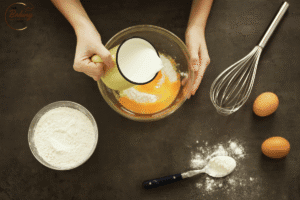
Leavening Agent Problems
Many beginner bakers assume adding extra baking soda or baking powder will make cookies rise more. But these leavening agents work best within a standard ratio.
When overused, they release too much carbon dioxide and water during baking. This causes cookies to rise quickly and then collapse, leaving you with flat, spread-out cookies.
Pro Tip: Always measure leavening agents precisely using mini measuring spoons or with a digital weight scale. Even a slight excess can ruin the structure.
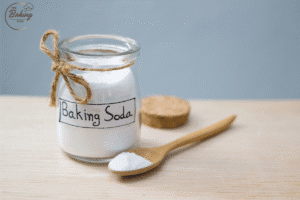
Low-Protein Flour or Too Little Flour
Flour is essential for building the cookie’s texture and structure. Using flour with low gluten content or reducing the flour quantity can weaken the dough’s strength. This leads to cookies that are thin, overly soft, and unable to hold their shape.
Recommendation: For home baking, stick with all-purpose flour. It provides enough gluten to support the cookie’s structure without making them tough.
Warm Dough or Overmixed Dough
Once you’ve balanced your ingredients, the next key factor is dough temperature. If you use warm ingredients (like melted butter) or overmix the dough, it warms up too much. This results in a soft, elastic dough with a fluid consistency.
When baked, the cookies lose their structure and spread into thin, uneven shapes.
Industry Tip: In professional baking, we maintain dough temperature between 26°C to 28°C for consistent results in every batch.
Incorrect Oven Temperature
Baking temperature is crucial for setting cookie shape. If the oven is too hot during preheating or baking, sugar and butter melt too quickly. This causes the cookies to flatten immediately, resulting in thin, candy-like textures.
Pro Tip: Always preheat your oven to the correct temperature and use an oven thermometer for accuracy.
Industry Practice: In large-scale production, we monitor baking temperatures with digital gauges and adjust baking time based on cookie weight to ensure consistent results.
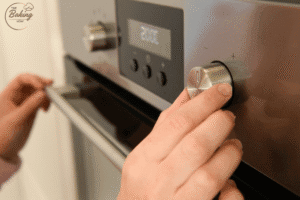
How to Fix Cookies That Spread Too Much
Now that you know why cookies spread, let’s dive into how to fix these issues step by step. These are the same techniques I’ve used in the biscuit and cookie industry to consistently achieve perfectly shaped cookies in every batch:
Adjust Ingredient Ratios
If your cookies spread too much, start by checking your sugar and fat ratios:
- Reduce sugar slightly, as too much sugar melts and weakens the dough structure during baking.
- Balance butter or fat by reducing it slightly or switching to a more stable fat like vegetable shortening (which holds shape better).
- Increase flour slightly (preferably higher-protein flour) to strengthen the dough’s structure and prevent excessive spreading.
👉 Related: 7 Common Cookie Baking Mistakes Beginners Make
Improve Dough Consistency & Temperature
- Always use room-temperature butter and eggs to keep dough stable. Avoid using warm ingredients, which make the dough too soft.
- Keep dough temperature in check; in the industry, we maintain it between 26–28°C (79–82°F) for best results.
- If your dough feels too sticky or soft, refrigerate it for 10–15 minutes before portioning and baking (but don’t freeze it as this can cause uneven spreading).
Use the Right Mixing Technique
- Cream butter and sugar properly to trap air, but avoid overmixing once flour is added, as this weakens the dough and causes spreading.
- If dough still feels too loose, gently fold in 1–2 tablespoons of flour at the end to adjust consistency.
👉 Also read: Basic Cookie Ingredients Every Beginner Should Know
Control Baking Temperature and Time
- Preheat your oven fully before baking. A too-hot oven causes butter and sugar to melt too fast, making cookies spread.
- Bake at a slightly lower temperature for a little longer to allow cookies to set without excessive spreading.
- For consistent results, use an oven thermometer to verify your oven temperature accuracy.
Industry Tip:
In professional baking, we test a few dough pieces before baking a whole batch. At home, try baking one test cookie first. Adjust the dough if needed before baking the entire tray.
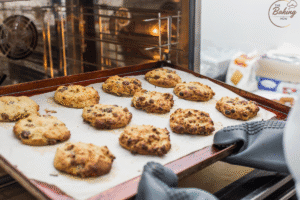
Final Thoughts: Why Do My Cookies Spread Too Much?
Cookie spreading is one of the most common challenges beginner bakers face, but it’s not impossible to fix. As we discussed, the secret lies in balancing your ingredient ratios, mixing techniques, and baking temperatures. Once you understand how each factor affects cookie structure, you’ll be able to troubleshoot and achieve answer why do my cookies spread too much.
In my 17 years in the biscuit and cookie industry, I have learned that even small adjustments—like switching to higher-protein flour or using a kitchen scale —can make a huge difference.
👉 For more expert baking science tips, check out this resource from King Arthur Baking on cookie structure.
Now it’s your turn: try these tips in your next batch and enjoy cookies that are as picture-perfect as they are delicious.
Next Step: Ready to improve your cookie baking? Check out our 7 Common Cookie Baking Mistakes Beginners Make for even more helpful tips.
FAQs for Flat Cookies
Q1: Why do my cookies flatten after baking?
Q2: Will chilling cookie dough prevent spreading?
Q3: Can I use bread flour to stop cookies from spreading?
Q4: Does parchment paper make cookies spread?

